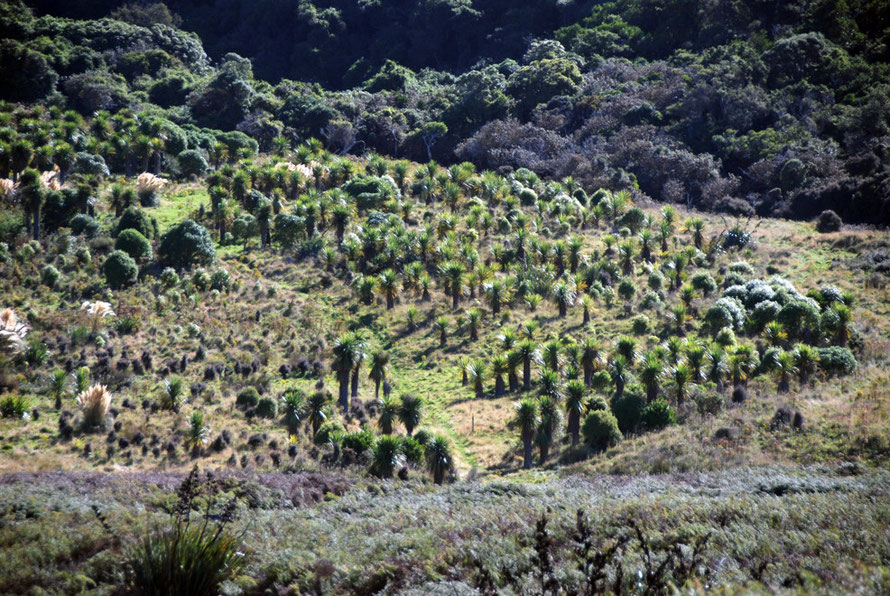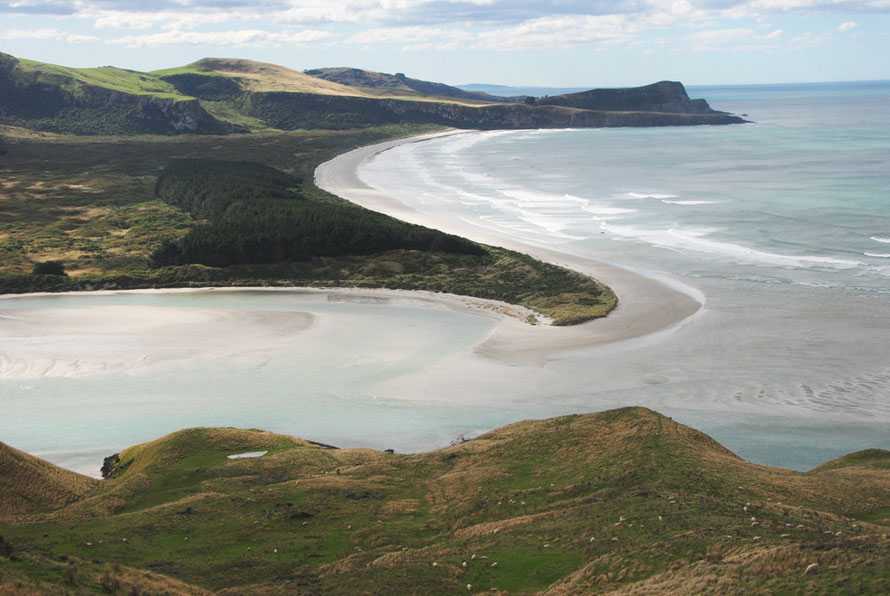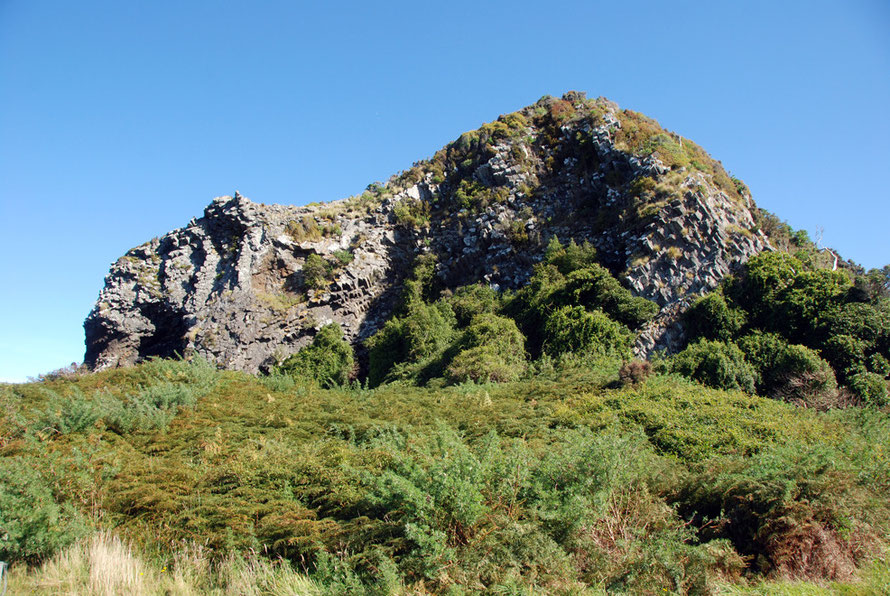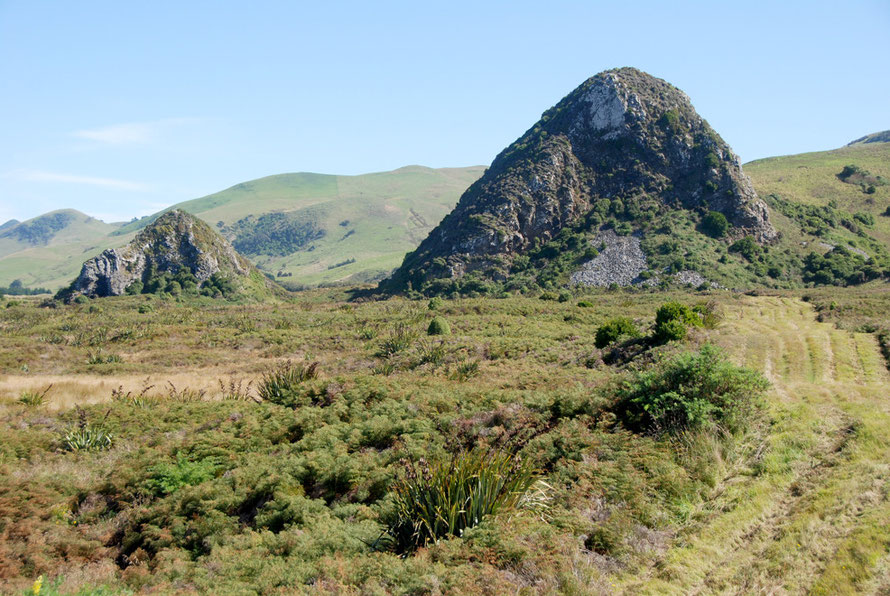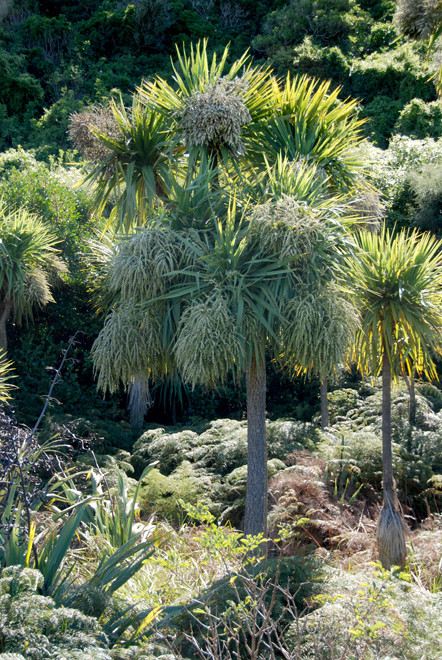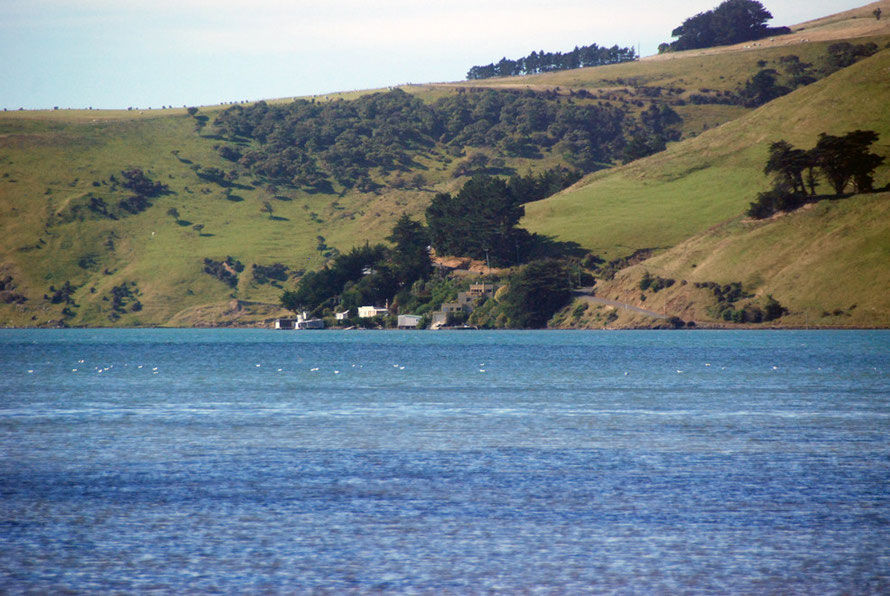III. Okia Flat and Victory Beach: Otago Peninsula
Victory Beach is a fabulous Pacific beach that ends with a flourish - a short curved sand spit and dunes at its southern end. This is home to the rare Hookers (New Zealand) Sea Lion/pakake and we watched them from afar through our telescope from the bach.
We had planned to go up Papanui Inlet by boat but the gale from the night before had blown Kyle's boat off its mooring. Later we walked to the beach from the car park at the end of Dick Road (not to be confused with Knobs Flat on the Milford Road).
We had gotten delayed in the morning after our neighbours had invited us to join them for a cup of coffee and a bun. We sat on their tiny waterside-lawn in the strong sun and talked about this and that. There was a couple, his brother and just as we left the sister arrived. It seemed the bach had been owned by their parents and now was held by them jointly.
I got the impression that the invite had something to do with the mix-up over their blessed parking space the evening before. The conversation felt like an assertion that our hosts were fully paid-up international New Zealanders with a daughter working in London.
They themselves were living up in Christchurch and were pretty gloomy about the chances of the city ever getting rebuilt after the devastating 2011 earthquake and its aftershocks.
The one bright side seemed to be a friend who had wanted to invest some money in a little, quiet enterprise - something that seems quite common in New Zealand. He bought a traffic cone business and since the earthquake and all the disruption caused by it traffic cones are in short supply and he - much to his surprise - is coining it.
I was struck by the entrepreneurial (or rentier) spirit in New Zealand. We met people who had set up their own businesses - a very successful Auckland estate agents, a woman working as a food safety compliance officer in the seafood industry and blokes running a wild venison business (Red Tussock Venison) and a big shearing run in New Zealand and Western Australia.
Anyway, as we left a fur seal came cartwheeling down the inlet with the incoming tide. It looked like it was having a lovely time, buoyed by the current in the sparkling clear water.
It was one of those dazzling days when you just see things.
Driving round Papanui Inlet, which was rapidly filling with the incoming tide we passed a pair of Pied Stilts feeding in shallow water at the head of the inlet. Then we passed a flock of domesticated geese cooling their feet. Paradise Shellducks made concerned quackings that rose to a crescendo before they took off.
And a pair of Spur-Winged Plovers were feeding in the New Zealand samphire (salicornia australis) growing from a mud flat - which was already turning into burnished reds, oranges and dusty purples with the season.

Spur-winged plovers (Vanellus miles) (Australia - 'Masked lapwing') are one of only two breeds of native bird (the other being the southern black-backed gull) in New Zealand that are so numerous as to be afforded no legal protection.
Since the 1930s they have rapidly colonised New Zealand after arriving from Australia and are the source of complaint from brassica-growers and airports where they account for 37 per cent of bird strike incidents.
Their call is a grating staccato rattle not dissimilar to a European Coot.
Although a ground nesting bird and vulnerable to the mammals that have done such damage to indigenous New Zealand birds they have faired very well. They are aggressive defenders of their territory and their evolution alongside mammals in Australia has clearly given them an advantage in New Zealand.
The landward side of the Okia Flat is marked by two lumps of rock known as 'The Pyramids'. I climbed the smaller one which gives a view of the flats and the brackish pools and ditches before stretching away over the low relict dune fields to the Pacific.
The pyramids were feed pipes to the huge Dunedin volcano centred on Otago Harbour. The lava flow has crystalised into hexagonal pipes reminiscent of the Giant's Causeway at Fingal's Cave and on the Antrim coast in the UK.
It turns out the 'natural' looking Okia Flats were farmed until 100 years ago and have been the object of much planned revegetation through the Yellow-Eyed Penguin Trust and Dunedin City Council.
A young French rambler was at the top of the pyramid. He spoke barely any English and I wondered how he was getting around. We saw him the next day making the long hot climb out of Sandy Fly beach and exchanged brief greetings.
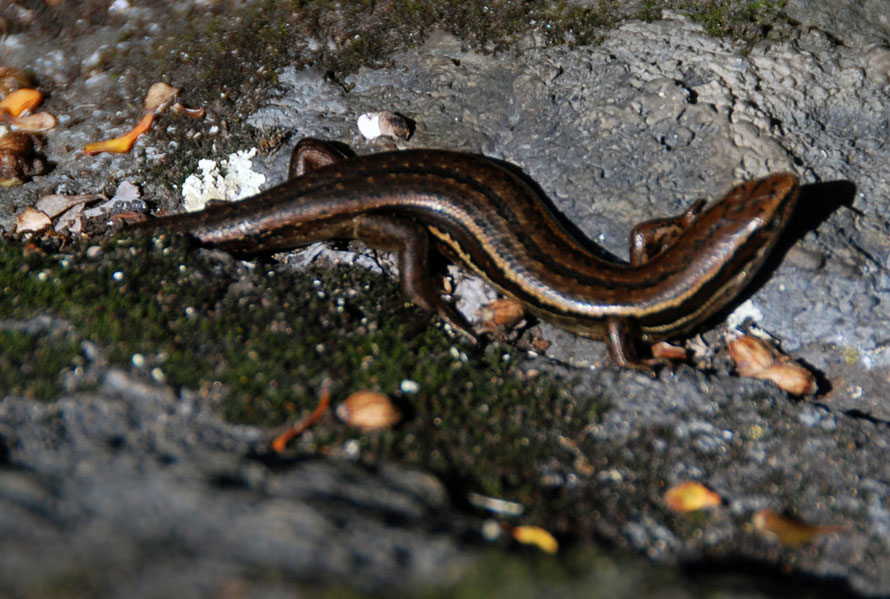
On my way down I heard scuttling in the dry bushes. A Common Skink (Oligosoma nigriplantare) was basking in the sun on a piece of warm basalt.
A cave apparently occupied by Maori was found at the bottom of the small pyramid - Te Matai o Okia - and excavated in 1934-8. The account of the excavation published in the Journal of Polynesian Studies in 1940 is here. The most significant find was a small wooden figure

We walked out along one of the firebreaks cut in the flat and overgrown dune.
A sign told us that a Maori village had been located on the site which was close to supplies of eel, shellfish and ti (cabbage) trees.
It was inhabited by peoples from the Ngāi Tahu, or Kāi Tahu iwi (loosely translated as 'tribe' or 'nation') who are the principal Māori iwi of the southern region of New Zealand.
Their tribal authority, Te Rūnanga o Ngāi Tahu, is based in Christchurch and Invercargill (see my page).
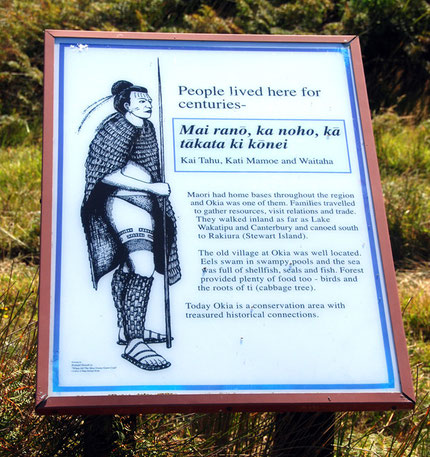
The Ngai Tahu were possibly preceded by members of the Kāti Mamoe, or Ngāti Mamoe iwi which moved to the South Island in the 16th century and joined the Waitaha iwi. Both were later absorbed through intermarriage by the Ngāi Tahu.
These signs are useful reminders of the 'Maori presence' in New Zealand but they obscure as much as they reveal. For example, what happened to the village and the people that lived in it?

Funnily enough we didn't see the sea lions at Victory Beach. I wasn't up to the long pull along the beach to the far southern end.
The beach was absolutley pristine. I didn't note it at the time but the only detritus we saw on it was wrack from seaweed - not a piece of plastic.
